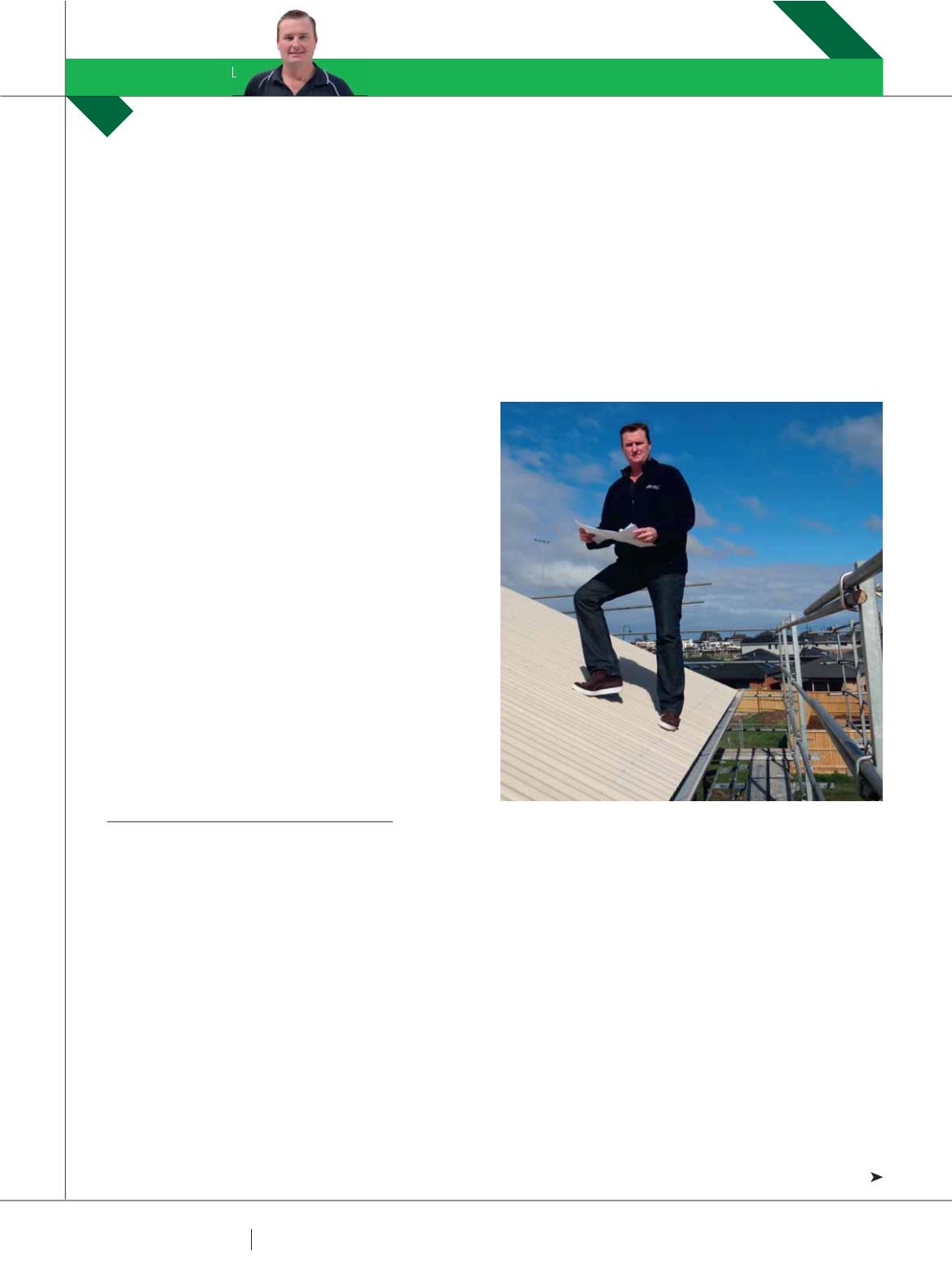

3 8
PLUMBING CONNECTION
SPRING 2015
PROVISION FOR OVERFLOW IN
EXTERNAL EAVES GUTTERS
T
he design of external eaves gutters has not changed a
lot over the past 150 years and, for the majority of the
houses in Australia, they have functioned as intended.
I have personally been in this industry for over 20 years
while my family have been in it for the better part of 40
years. Needless to say, we have installed external eaves
gutters on thousands of houses and have always known that
gutters must have provision for overflow. As you walk around
any suburban street though, you will notice that most
standard house gutters do not have provision for overflow.
Why has this been allowed to happen in a regulated and
supposedly well-educated industry?
After the release of
AS2180 – 1986 Metal Rainwater goods
– Selection and Installation
we changed the design of our
quad guttering to always run with overflow slots as stated
in
Section 2. Installation, 2.1.2 High-fronted eaves gutters.
It
states:
Where high-fronted eaves gutters are installed, care shall
be taken to ensure that water will not flow back into the roof
or building structure.
NOTE: Methods of preventing this backflow are as follows:
a.
Provision of slots in the front of the guttering.
b.
Provision of a lower level weir overflow at some point in the
drainage system, e.g. rainhead.
c.
Suitable design of flashing and fixing of guttering to the
fascia board.
According to the Australian Bureau of Statistics, in the
five year period from July 2009 and June 2014 806,245
houses were approved for construction. Let’s be more than
fair and assume that only 70% had external eaves gutters
– that’s 564,372 houses in a five year period that have been
built in Australia. Little did anyone know that the ‘design’ of
the external eaves gutter did not comply because AS2180 –
1986 was superseded by AS/NZS 3500.3.2: 1998, and then
again by AS/NZS 3500.3: 2003 and now by the new AS/NZS
3500.3: 2015.
AS/NZS 3500.3: 2015 is so riddled with grey areas that
it comes as no surprise that no one has picked this up as
a compliance issue until now. In addition to this, here in
my State there was the move from the industry dedicated
regulator the Plumbing Industry Commission (PIC), to the
all-encompassing Victorian Building Authority (VBA). As a
consequence of that, it appears to have led to a replacement
of experienced plumbers/inspectors, with ‘book smart’
people who had no previous exposure to building, let alone
plumbing.
A colleague from another plumbing company contacted
me over a month ago to ask if I had been pulled up under
the new provision for overflow regulation. I mentioned that
I had no idea what he was talking about. Then, coincidently
at the time of writing, in July, I received a call from the
VBA, telling me that our business had been picked out for a
new snap audit directive which the VBA was now carrying
out on plumbing companies. They asked us to supply them
with details of 40 houses we had issued a certificate of
compliance on.
WITH OUR CHANGING WEATHER PATTERNS, WE CAN EXPECT TO SEE MORE RAIN EVENTS THAT PUT OUR GUTTER
SYSTEMS TO THE TEST. BUT ARE WE ALL READING FROM THE SAME TECHNICAL TEXT BOOK?
PETER COLL
OF
INTERLINE ROOFING QUESTIONS THE CURRENT UNDERSTANDING OF WHAT IS ACTUALLY THE RIGHT APPROACH TO
THIS ISSUE FOR DOMESTIC ROOF/GUTTER INSTALLERS.
Peter Coll of Interline Roofing isn’t sure we’re all reading
from the same regulatory roofing text book.
METAL ROOFING 101
PETER COLL
















